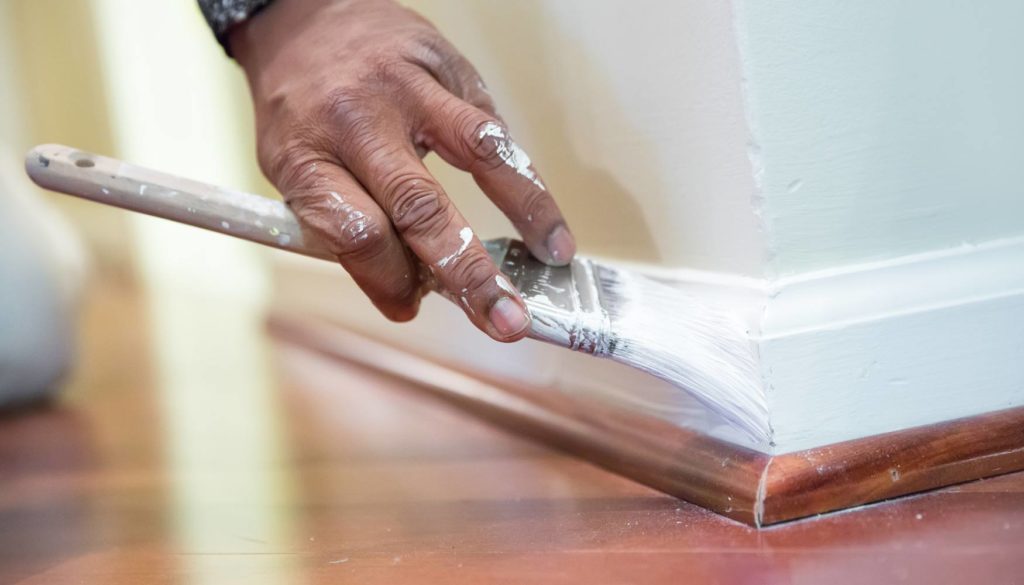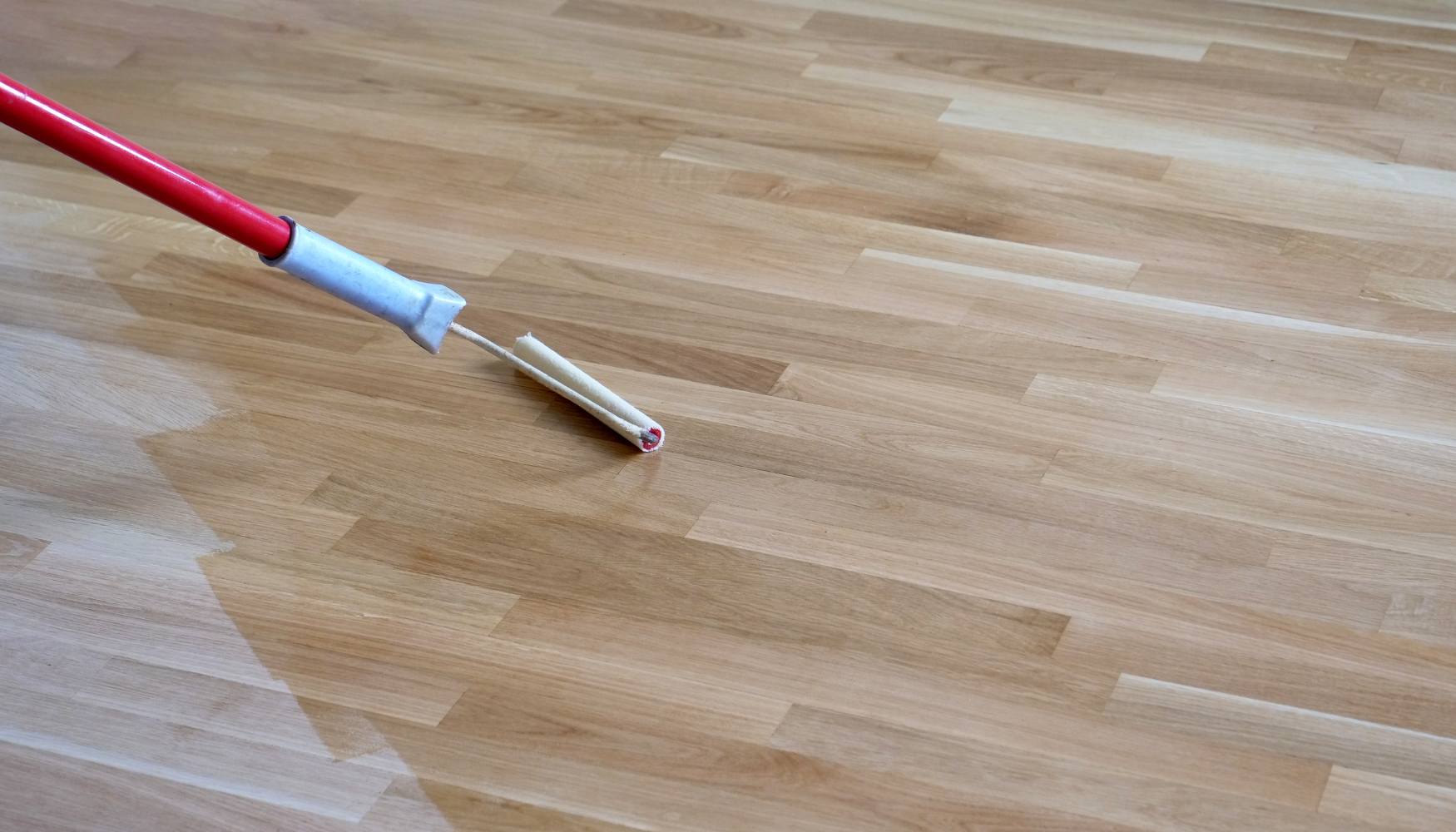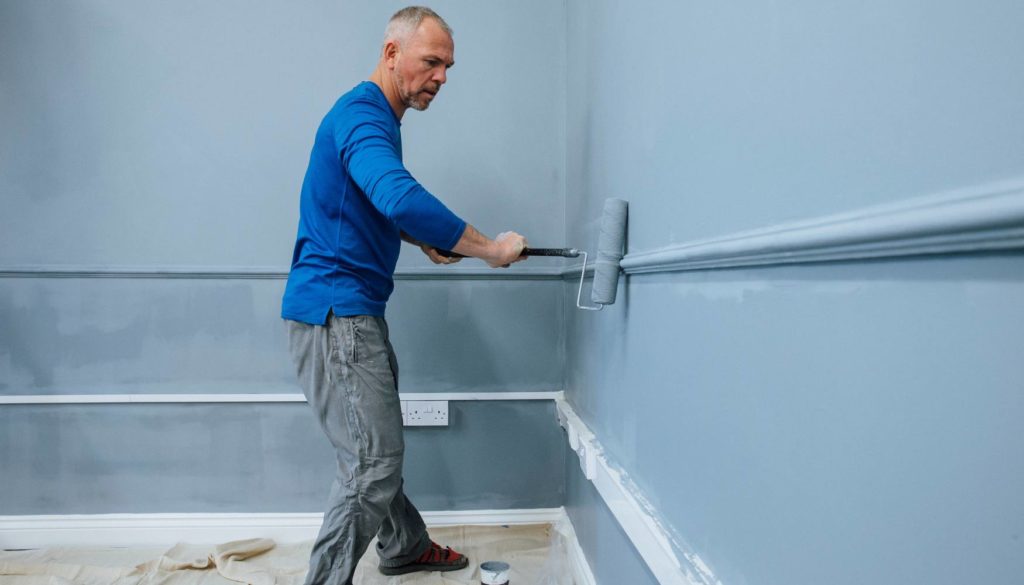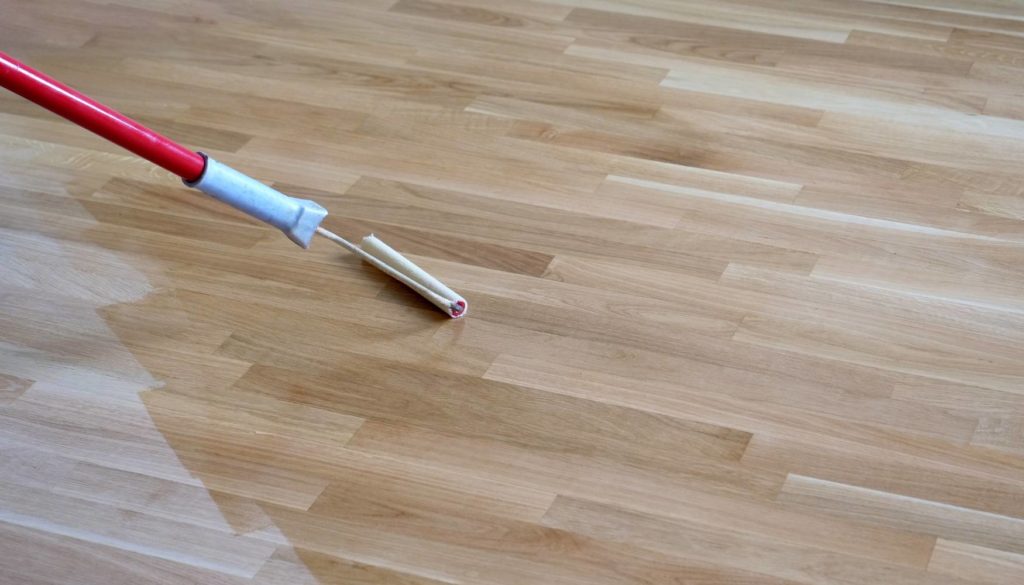We often say that experiencing a long, slow, boring event was like “waiting for paint to dry.” If you have ever had a heavily-used room painted, you know how torturous it can be to avoid touching the walls, especially if you have children or pets.
Waiting for paint to dry is not just boring; it can be anxiety-producing. You don’t want to mar a good paint job that took a lot of money and work, but you also can’t always put all activity on hold to wait until the paint is cured.
Read on to learn about drying time, when it is safe to resume your normal layout and activity in a recently painted room, as well as how you can do so with as little harm to your walls and furniture as possible.
Table of Contents
- How Long Should Paint Dry Before Putting Furniture Back?
- 5 Factors That Affect Dry Time
- Tips for Returning Furniture After Painting
- Two Brothers Painting: Experienced Professionals for Interior and Exterior Painting
How Long Should Paint Dry Before Putting Furniture Back?
Generally, paint can dry within 3-5 hours, but it depends on several factors. Of course, it’s best to wait longer to ensure you don’t damage furniture or ruin the paint job, but in most cases 3-5 hours is safe. Keep in mind, however, that paint takes much longer to cure than it does to dry.
If you opt to have a professional like Two Brothers Painting do your paint job, we can give you a more personalized estimate for drying time based on your home’s particular environment.
Paint Drying vs. Paint Curing
Drying time refers to how long it takes for paint to be dry to the touch — You can touch it and nothing comes off on your fingers.
Basically, it means the outside of the top layer is dry. Often, if more than very gentle pressure is placed on a dry, but uncured, area of paint, the paint job will be damaged — especially if it has multiple coats on it.
Curing time refers to how long it takes for every layer of paint to be thoroughly dry.
All of the solvents or water have completely evaporated from the paint. You can tell if paint is cured by pressing a fingernail into it. If it leaves a dent, then the paint is not fully cured.
How Long Should Paint Cure Before Putting Stuff on It?
It generally takes about a week for paint to cure, but many factors can affect this estimate. For instance, whether the wall is plastered, the temperature of the room, and the weather. Sometimes it may take as little as 5 days, or it may be in the 7-10 day range.
If you’re returning heavy items on top of the paint – like a mantle or bookshelf, or if you’ve painted your floors or interior cabinets – the longer you wait the better. Although the paint might feel dry to the touch, heavy objects can sink down into the paint if it’s not fully cured, ruining the paint job and your furniture.
5 Factors That Affect Dry Time
Though a week is the general rule of thumb for waiting for paint to cure, you may have to adjust your plans based on the following variables.
#1: Temperature
Higher temperatures make paint dry faster. Be careful not to paint when it’s too hot outside.
If the temperature is 90℉ or higher, the paint may dry too fast, preventing the binders and pigments from coalescing as well and thus compromising the durability of the protective paint film. Excessive heat can cause bubbles to form and lead to blisters in the paint.
Lower temperatures can significantly increase drying time. If the temperature is below 50℉, the paint may dry improperly in the following ways:
- It can cause the paint film to crack.
- It can interfere with color uniformity.
- The paint may not adhere smoothly, leading to film build-up.
You should also avoid painting if the temperature will fall below 35℉ at any point during the three days after the paint is applied.
#2: Humidity Levels
High humidity can cause paint to take longer to dry because the moisture in the air makes the solvents in the paint evaporate more slowly. For exterior paint jobs, be sure you know what weather to expect. Humidity, temperature, precipitation, and wind are all important factors to consider. You’ll want several days in a row of non-inclement weather in the forecast before you plan the paint job.
For interior paint jobs, you can manage humidity levels. For example, a dehumidifier and good ventilation can decrease curing times. There should be less than 50% humidity in the room you are painting. If your bathroom has been painted, you should avoid taking hot showers to prevent steam, which can ruin paint that’s not fully cured.
#3: Number of Coats
The more layers of paint are applied, the longer the drying time will be. Professionals recommend waiting at least four hours before applying subsequent layers.
In addition, the method of application determines how thick each layer is. Thicker coats will take longer and thinner coats will dry faster. Application methods, in increasing order of thickness, are as follows:
- Paint sprayer
- Roller
- Paintbrush
If you use a roller or a paintbrush, be sure they are not oversaturated with paint. It is better to apply multiple layers than to apply fewer layers that are too thick. Remember, if you use many coats, the top layer might feel dry to the touch, but that does not mean that every layer has dried thoroughly.
Each layer should be dry for a certain amount of time before applying another coat. Follow the recommendation for the paint type you are using. Not waiting long enough can cause streaks in the paint, uneven color, or paint chipping.
#4: Type of Paint
Latex-Based Paint
Latex-based paint typically dries to the touch in under an hour or two if there is a good ventilation system, but might take days or weeks to fully cure. Paint on trim takes longer to dry, usually around 4-5 hours.
Waiting overnight to return furniture is generally safe, as long as furniture doesn’t touch the wall for 24-48 hours. Wait a day before hanging items on the walls.
Paint on raw wood will dry faster than paint over a previously painted surface, especially if the paint you are covering is oil-based. This is not recommended, however, because you can have problems with adherence.
If you are painting over wood trim that is already painted, consider sanding before painting over it to prevent the paint from getting too heavy and starting to peel. For walls, there is generally no limit to the number of times you can repaint.
Latex paint also has fewer volatile organic compounds, leading to less cracking.

Oil-Based Paint
Oil-based paint typically dries in around eight hours and cures in one week. If you use a thinner in the paint, you can decrease drying time.
In reality, oil-based paint doesn’t dry by losing moisture to the air. Oil-based paints are made by grinding pigments together with an oil. This oil does not evaporate. It undergoes polymerization when it is exposed to oxygen in the air. This process causes the paint to solidify.
The layer of paint exposed to the air will be the first to oxidize. The layers underneath will oxidize but it will take much longer for the oxygen molecules to work their way to them.
The paint will gain weight as it binds with oxygen molecules, but then lighter, more volatile molecules will escape from the paint film and make it contract, causing cracks in the paint. So, although oil-based paint is more durable than latex-based, it loses its flexibility over time and can become more brittle.
OIl-based paint may be preferable for areas in harsher conditions or that undergo more wear and tear, such as:
- Cabinets
- Metals or piping
- Doors
- Trimming
- Furniture finishes
#5: Ventilation or Air Flow
You want good ventilation for a proper dry. No airflow or insufficient airflow will cause a slower dry time.
Having windows open, especially with box fans, helps increase airflow and rid the room of harmful vapors while you’re painting.
Tips for Returning Furniture After Painting
Returning furniture prematurely can result in paint on your furniture and damage to the paint job, costing you more time and money to repair.
For heavier items like mantles, cabinets, and bookshelves, you’ll need to wait longer before putting them in their original places. The paint might be dry to the touch, but if it isn’t fully cured the weight of items going onto it can ruin it.
In summary, keep the following tips in mind when planning to move furniture into a recently painted room:
- Make sure the paint is completely dry.
- Avoid hitting painted areas with furniture – you can return it to its area but keep it from touching the wall for a full 24-48 hours.
- Use furniture pads to protect the walls, floors, and furniture if you are unsure whether you can avoid damaging them with paint.
- Err on the side of caution. The longer you wait the better.
How Long Should Floor Paint Dry Before Putting Furniture Back?
Completely avoid floors for at least 24 hours to avoid damage, but waiting a full 3-7 days before moving furniture back is ideal.
What Happens If You Return Furniture Prematurely?
If you return furniture before the paint is fully cured, you might ruin your furniture. It can stick to the walls or floor or get paint on it. You might also ruin the paint job, which will cost you more time and money since you’ll need to touch up or redo the paint job and possibly replace your damaged furniture.
We recommend waiting 1-7 days before hanging things on the wall to avoid sticking or damaging the paint. In 24 hours it should be safe to return light switches and outlet covers.
Two Brothers Painting: Experienced Professionals for Interior and Exterior Painting
If you live in the Portland area, you can get reliable professional help for your interior or exterior paint job by contacting Two Brothers Painting.
Schedule an estimate today, and meet our trusted, experienced painters who can advise you concerning all you need to know about protecting recently painted surfaces.




